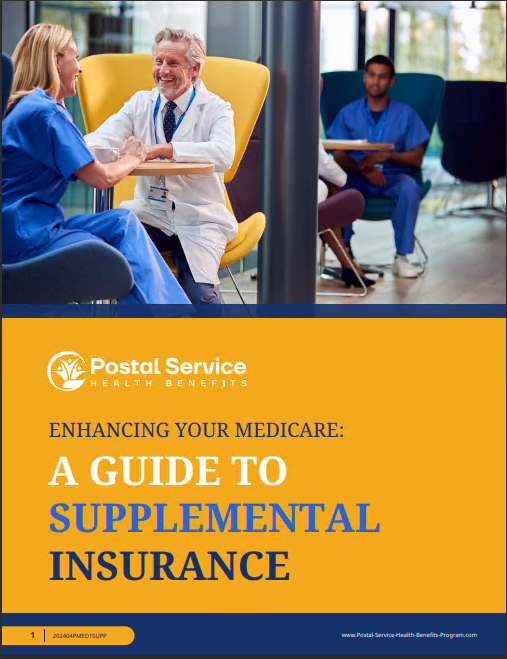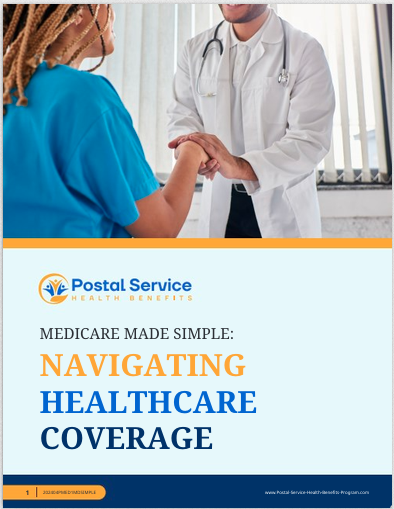Key Takeaways
-
The Postal Service Health Benefits (PSHB) program is now the primary health coverage option for USPS employees and retirees, replacing the Federal Employees Health Benefits (FEHB) program.
-
This transition introduces new requirements, cost structures, and benefits tailored specifically for USPS workers and retirees, making it essential to review your plan options carefully.
A New Era for Postal Workers’ Health Benefits
The Postal Service Health Benefits (PSHB) program has officially replaced the Federal Employees Health Benefits (FEHB) program as of January 1, 2025. This transition impacts all United States Postal Service (USPS) employees, retirees, and eligible family members. Whether you’re preparing for retirement or currently employed, understanding the changes brought by PSHB is essential to making the most of your benefits.
What Prompted the Change?
The shift to PSHB was introduced by the Postal Service Reform Act, aiming to address USPS’s financial challenges while ensuring health benefits remain sustainable and tailored to the unique needs of postal workers. By separating USPS health plans from the broader FEHB program, PSHB aims to streamline costs and offer USPS-specific options that better align with the workforce.
Who Is Affected by the Transition?
The PSHB program applies to:
-
Current USPS employees
-
USPS retirees
-
Eligible family members, including spouses and dependents
If you previously received health benefits under the FEHB program, you’re automatically transitioned to a comparable PSHB plan. However, it’s crucial to review your options during Open Season to ensure your selected plan meets your needs.
Key Changes to Expect
Enrollment Process
PSHB enrollment follows a similar process to the FEHB program but is tailored specifically for USPS employees. Here’s what to expect:
-
Open Season Period: Runs annually from mid-November to mid-December. For 2025, the Open Season dates are November 11 to December 13.
-
Automatic Enrollment: Current enrollees in FEHB plans are automatically transitioned to a corresponding PSHB plan.
-
Qualifying Life Events (QLEs): Outside of Open Season, you can only make changes during significant life events, such as marriage, birth of a child, or retirement.
Medicare Integration Requirements
If you’re Medicare-eligible, PSHB plans are designed to integrate seamlessly with Medicare Part B. Key points include:
-
Mandatory Enrollment: Medicare-eligible retirees and family members must enroll in Part B to maintain PSHB coverage unless exempt due to specific criteria, such as retiring before January 1, 2025.
-
Coordination of Benefits: Many PSHB plans waive or reduce deductibles and lower copayments for enrollees with Medicare Part B, reducing out-of-pocket costs.
Prescription Drug Coverage
PSHB plans include prescription drug benefits that align with Medicare Part D through an Employer Group Waiver Plan (EGWP). This ensures:
-
Lower out-of-pocket drug costs
-
Compliance with Medicare Part D’s $2,000 annual out-of-pocket cap
-
Access to a broader network of pharmacies
Understanding Costs Under PSHB
PSHB plans come with a range of cost-sharing structures that include premiums, deductibles, copayments, and coinsurance. Here’s a breakdown of what you can expect:
-
Premiums: Your contribution will vary based on the plan type (“Self Only,” “Self Plus One,” or “Self and Family”). The government continues to cover about 70% of the total premium cost.
-
Deductibles: Lower deductibles are available in many plans, particularly for in-network services. High-deductible plans often come with accompanying health savings accounts (HSAs).
-
Copayments and Coinsurance: Copayment amounts for services like primary care, specialist visits, and urgent care vary by plan, while coinsurance typically applies to more extensive services like hospital stays.
-
Out-of-Pocket Maximums: In-network limits are capped at $7,500 for Self Only plans and $15,000 for family plans, helping protect you from excessive costs.
Making the Most of Open Season
Each year during Open Season, you’ll have the opportunity to evaluate your PSHB plan and make changes as needed. Here are some tips to help you make informed decisions:
Review the Plan Brochure
Every PSHB plan has a detailed brochure outlining benefits, costs, and network options. Take time to compare deductibles, copayments, and out-of-pocket maximums to ensure the plan aligns with your healthcare needs.
Evaluate Network Coverage
Check whether your preferred healthcare providers and facilities are part of the plan’s network. Out-of-network services typically come with higher out-of-pocket costs.
Consider Your Family’s Needs
If you’re enrolling in a family plan, assess the needs of all dependents. This includes anticipated medical expenses, prescription drug needs, and any potential life changes in the upcoming year.
What Happens If You’re Retired?
For retirees, the PSHB program offers several benefits but also introduces requirements you should be aware of:
-
Medicare Coordination: Enrolling in Medicare Part B is essential unless you meet specific exemption criteria. This ensures your PSHB plan covers remaining healthcare costs.
-
Prescription Drug Benefits: As a retiree, your PSHB plan provides integrated prescription drug coverage that minimizes out-of-pocket expenses.
-
Continuing Coverage: Your PSHB coverage continues seamlessly as long as you meet eligibility requirements and fulfill Medicare Part B enrollment obligations.
Key Deadlines to Remember
Staying on top of deadlines is crucial to avoiding lapses in coverage or missing out on benefits. Key dates include:
-
January 1, 2025: Official start of the PSHB program.
-
November 11 – December 13, 2025: Open Season for reviewing and changing plans.
-
Medicare Enrollment Periods: Ensure timely enrollment in Medicare Part B if you’re newly eligible or planning to retire.
Addressing Common Concerns
Will My Benefits Change?
While PSHB plans are designed to mirror FEHB coverage in many ways, specific benefits, premiums, and cost-sharing structures may vary. Reviewing your plan annually is essential to ensure it still meets your needs.
How Does Medicare Enrollment Affect Me?
If you’re Medicare-eligible, integrating your PSHB plan with Medicare Part B ensures comprehensive coverage and reduces out-of-pocket expenses. Remember, failure to enroll in Part B could result in loss of PSHB coverage unless exempt.
What If I Miss Open Season?
If you miss the Open Season window, you can only make changes during qualifying life events. Mark your calendar to avoid missing this crucial period.
How the PSHB Transition Benefits You
The PSHB program’s design caters specifically to USPS employees and retirees, offering tailored benefits and cost-saving opportunities. From integrated prescription drug coverage to lower out-of-pocket costs for those enrolled in Medicare, the program addresses many common healthcare concerns. By staying informed and proactive, you can take full advantage of the benefits available under PSHB.
Stay Prepared and Informed
As a USPS employee or retiree, navigating the PSHB program doesn’t have to be complicated. By understanding the program’s key features, enrollment requirements, and benefits, you can ensure your healthcare coverage aligns with your needs. Don’t miss out on opportunities to adjust your plan during Open Season and make sure to meet any Medicare-related requirements.






